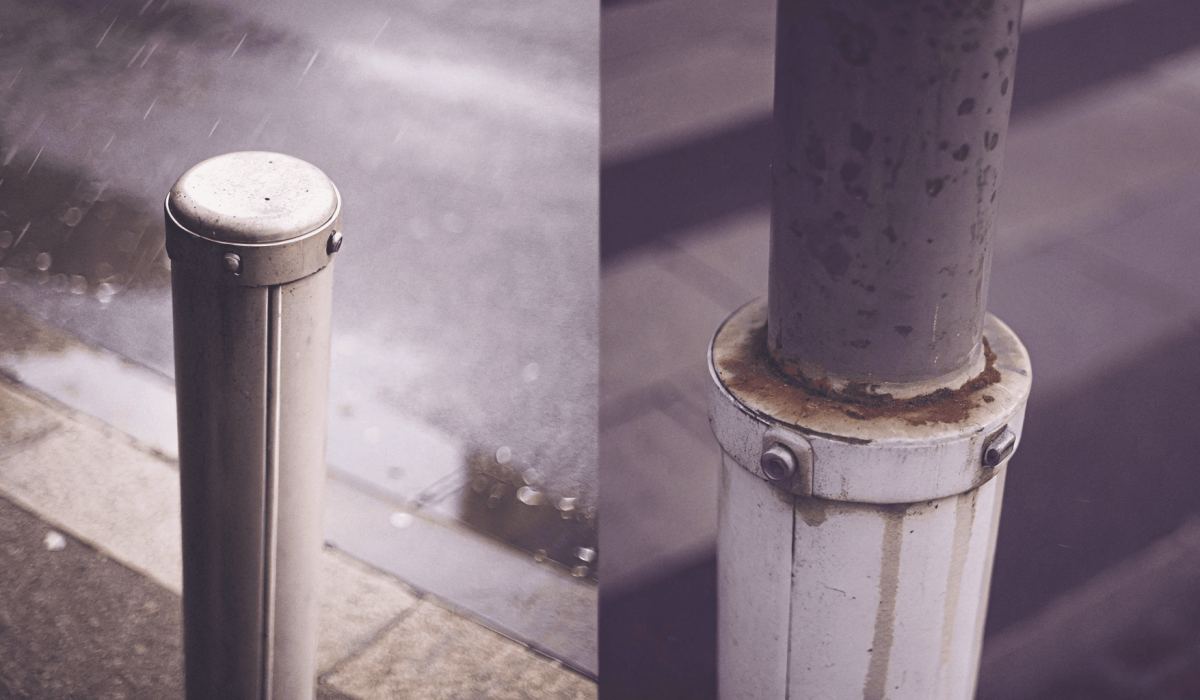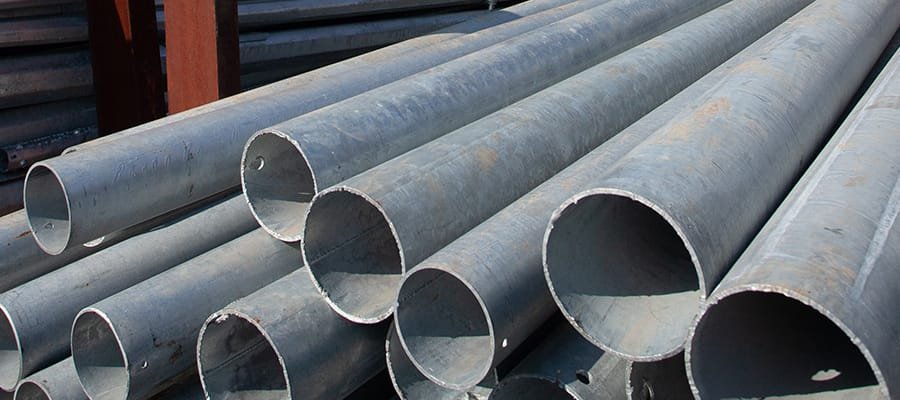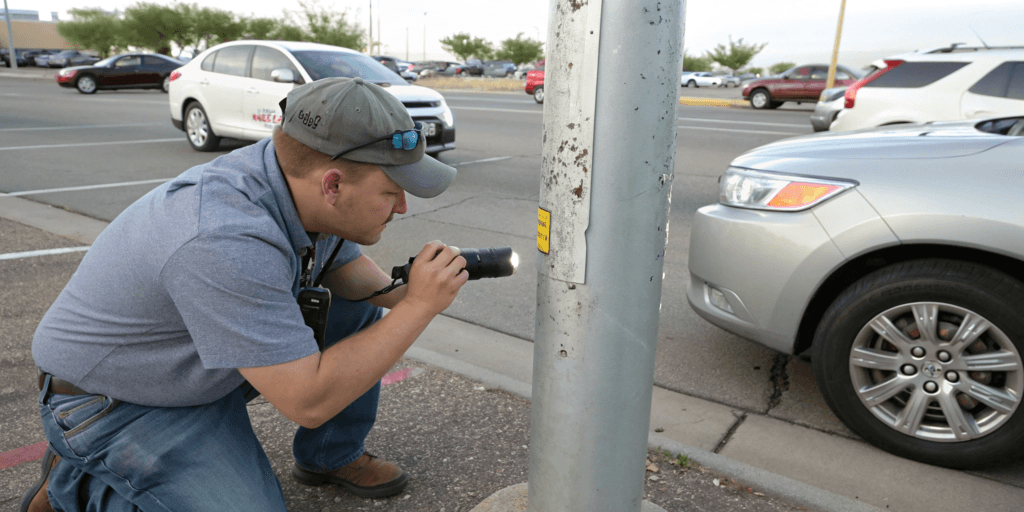Light poles installed outdoors are constantly exposed to harsh weather, impacts, and environmental stress. Choosing the wrong material or design can lead to quick failures and costly repairs.
A durable light pole should combine quality materials, structural integrity, and environmental resistance to ensure long-term reliability with minimal maintenance.
Let’s unpack what really matters when selecting a pole that can handle outdoor challenges and still look and perform like new after years of use.
The Role of Material Quality in Light Pole Durability
Not all materials are created equal. The material used for your light pole directly affects its lifespan, maintenance needs, and resistance to weather, rust, and impact.
Steel, aluminum, fiberglass, concrete, and composites each offer unique advantages depending on where and how the pole will be used.
For example, steel poles are extremely strong but need galvanization to resist corrosion. Aluminum poles are naturally rust-resistant, making them great for coastal or humid areas. Fiberglass and composite materials are ideal for industrial environments due to their chemical resistance and non-conductive properties.
| Material | Strength | Corrosion Resistance | Ideal Environment |
|---|---|---|---|
| Steel | High | Medium (needs coating) | Urban & high-load areas |
| Aluminum | Medium | High | Coastal & humid regions |
| Fiberglass | Medium | High | Industrial, flood-prone |
| Concrete | High | Very High | Cold & windy environments |
| Composite | Medium | Very High | Coastal & chemical exposure |
Additionally, coating matters just as much as the base material. Powder coating and hot-dip galvanization create a protective layer that prevents environmental damage. Skipping this step is a costly mistake.
Weather Resistance Is More Than Just Rust-Proofing
Outdoor poles deal with more than moisture. Sunlight, temperature swings, rainstorms, and high winds all stress the structure.
To ensure longevity, your light pole should resist UV rays, heat, cold, and wind-induced pressure, not just corrosion.
UV resistance is especially important in tropical or desert climates—prolonged exposure can degrade plastics and coatings. Heat and cold cycles cause expansion and contraction, potentially cracking lesser materials. For windy areas, like open fields or coastal zones, aerodynamic design and wind-load testing are essential.
We always recommend choosing poles that come with climate-specific certifications—whether that’s salt spray testing for marine regions or thermal cycling tests for alpine climates.
Structural Stability and Load-Bearing Strength
Durability also means being able to stand firm—literally. It’s not just about material; it’s about structure and design.
A light pole must support its own weight, lighting fixtures, and resist forces from wind, ice, and external impacts.
Here’s what to consider:
- Load-bearing capacity: A good rule of thumb is to check the rated static and dynamic loads.
- Pole foundation: Installation site soil affects required foundation depth—soft soils need deeper bases.
- Wind resistance: Poles in open or coastal areas must meet local wind zone regulations (e.g., 100–160 km/h wind tolerance).
Poor foundation work or underestimated load calculations are among the top causes of premature pole failure.
Maintenance Efficiency: The Hidden Cost Saver
Even the strongest poles aren’t truly “durable” if they need constant attention. Long-term value means low upkeep.
The most cost-effective poles are those designed with maintenance in mind: modular, accessible, and self-protecting.
Modular designs allow for easy replacement of fixtures or arms without disassembling the entire pole. Anti-dust and self-cleaning coatings reduce cleaning frequency. Corrosion-resistant materials minimize the need for repainting.
A pole that saves $200/year in maintenance across 15 years easily justifies a higher upfront price tag.
Impact and Vandal Resistance for Public Safety
In real-world conditions, poles don’t just face the weather—they’re bumped, scraped, or even vandalized.
Impact resistance protects the pole, fixtures, and nearby people or property from damage in high-traffic or sensitive areas.
Anti-climb designs reduce the risk of vandalism. Reinforced bases and fixtures rated IK08 or higher resist accidental impacts from vehicles or tools. In seismically active regions, shock-absorbing designs ensure the pole stays standing during tremors.
Durability means not just surviving, but continuing to function safely after unexpected events.
Environmental Sealing and IP Rating
Moisture and dust aren’t always visible—but they ruin electronics fast. Your pole’s internal components must be sealed tight.
An IP65-rated enclosure keeps internal circuits protected from water and dust—essential for reliable performance.
Look for:
- IP65 or higher for junction boxes and LED drivers
- Sealed gaskets made of UV-stable rubber
- Waterproof connectors for wiring
Poor sealing is a silent killer—it causes flickering lights, electrical faults, and corrosion that starts from the inside out.
Sustainability: Durability with a Green Advantage
Durability and sustainability go hand in hand. Fewer replacements mean less waste, less labor, and less material use.
Poles made from recyclable materials, paired with energy-efficient LEDs or solar systems, offer long-term environmental and financial benefits.
Solar poles, for instance, are ideal for remote or off-grid areas. They reduce electricity costs and simplify installation. Recyclable aluminum or steel ensures the product doesn’t end up in a landfill.
This matters even more in developing markets where infrastructure reliability and long-term ROI are critical.
Certification and Testing: Don’t Buy Without Proof
Manufacturer claims are cheap—certification is what counts.
A durable pole must be tested and certified by credible institutions for structural and environmental standards.
Common certifications include:
- ISO 9001/14001: For quality and environmental management
- CE/UL: Electrical safety
- Local wind/seismic standards: Site-specific reliability
Ask for test reports. If they can’t show you real-world performance data (wind tunnel, salt spray, pull-out resistance), walk away.
How to Choose the Right Durable Light Pole for Your Project
Let’s wrap all this into a decision-making framework.
To pick the right pole, match your environmental conditions and usage needs with certified materials, smart design, and supplier transparency.
Here’s a practical checklist:
| Step | What to Check | Why It Matters |
|---|---|---|
| 1 | Site location and climate | Guides material and coating choice |
| 2 | Wind load and seismic zone | Affects structural design requirements |
| 3 | Load from fixtures, banners, etc. | Ensures safe pole performance |
| 4 | IP rating and waterproof sealing | Prevents internal corrosion or failure |
| 5 | Certification and test reports | Verifies real-world durability |
| 6 | Maintenance strategy (modular/self-clean) | Lowers lifetime cost |
| 7 | Sustainability needs (solar/recyclable) | Reduces emissions and operational cost |
A properly selected light pole lasts 15–25 years with little intervention. That’s value you can rely on.
Conclusion
A durable light pole isn’t just a product—it’s a system that balances material strength, weather resistance, impact protection, and smart design. When chosen well, it delivers long-term safety, performance, and savings, even in the harshest environments. Invest wisely, and your lighting infrastructure will stand tall for decades.





